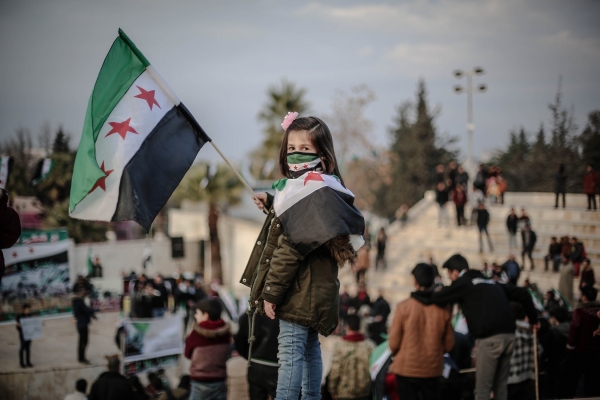On 7 April 2018 in the Syrian territory of Douma, on the outskirts of the capital Damascus, 43 people died following an explosion caused by an airstrike. Responsibility for the attack was immediately attributed to the Syrian government, but the uncertainty about the dynamics of the incident and the identification of the weapons used raised various doubts about this hypothesis.
A few days after the attack, the Organization for the Prohibition of Chemical Weapons (OPCW) - the monitoring body of the 1997 Convention - began investigations to identify the actual perpetrators of the attack and to verify the presence or not of weapons chemicals.
In the first statements released, President Bashar al-Assad had denied the involvement of the Syrian army and the event itself, also refuting the presence of dead and wounded. In fact, both the Syrian government and its Russian ally had claimed the non-existence of the attack itself, accusing the forces opposing the Assad regime of having spread false news.
According to the Syrian thesis, the denunciation by the OPCW would have been part of a strategic plan by the West to weaken the regime. Following the alleged events in Douma, suspected Syrian involvement led the United States, France and the United Kingdom to conduct a missile offensive in the country. The American President, at the time Donald Trump, and the French President, Emmanuel Macron, began a massive media campaign against the Syrian regime, declaring that they already possess evidence of the use of chemical weapons.
However, in its 2019 preliminary report, OPCW acknowledged the existence of the attack and blamed the Syrian Assad regime for being responsible. Furthermore, the presence of chemical weapons has been verified from the first preliminary research. In the following years, the inspections conducted by the OPCW on the explosion sites found traces of chlorine and nerve gas. Finally, the statements of survivors and eyewitnesses left no doubt about the involvement of the Syrian government.
The OPCW investigations officially ended at the beginning of February 2023. After five years of research, it was possible to conclude not only that the air attack actually occurred - thus discrediting the initial statements released by Syria and Russia - but also that it was the Syrian government that was responsible.
In the released report, the Organization's on-site investigators reiterated when they were initially found in 2019, providing overwhelming photographic evidence to prove the attack. The surveys obtained in the area have demonstrated the presence of chemical materials, in particular chlorine and nerve gas. Furthermore, thanks to the survivors and eyewitnesses of the incident, it was possible to reconstruct the dynamics and timing of the air attack.
At the end of the investigation, the OPCW spokesman delivered the entire file relating to the attack into the hands of the UN Security Council, leaving it to decide on a possible international response.
The nerve gas, found at the blast sites, is considered the deadliest chemical agent in the world; given its danger, the United Nations has classified it as a weapon of mass destruction. The use of chemical weapons in conflicts is strictly prohibited by the Chemical Weapons Convention, to which Syria is a party state. Accession to the treaty requires the country to provide all necessary information regarding a possible use on its territory and to facilitate verification operations for OPAC operators – actions that Syria has not taken. The coordinator of the inspection and identification team, Santiago Onate Laborde, accused the country of having tried to hinder and hinder the investigation by not providing the requested information.
The delivery of the file to the UN Security Council marks the end of an investigation that lasted almost five years and raises a difficult question within the United Nations, which will have to decide how to respond to this serious international violation. As reported by the UN spokesman himself, the use of chemical weapons poses an "unacceptable threat" and a "serious danger for everyone".
Original report available here:
https://news.un.org/en/story/2023/02/1133252
by Federica Tognolli







